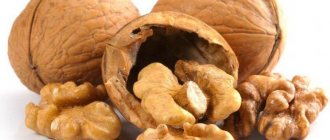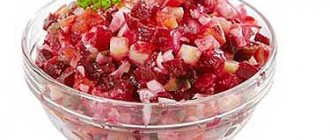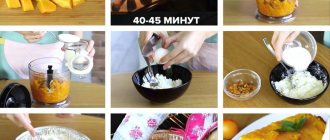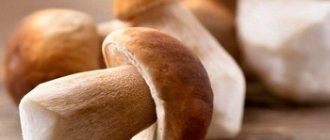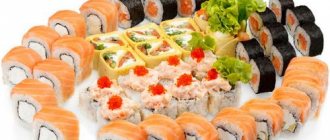Fried rice with onions
rich in vitamins and minerals such as: silicon - 1233.8%, phosphorus - 13.6%, chlorine - 13.6%, cobalt - 32.3%, manganese - 56.8%, copper - 18.9%, molybdenum - 12.1%
- Silicon
is included as a structural component in glycosaminoglycans and stimulates collagen synthesis. - Phosphorus
takes part in many physiological processes, including energy metabolism, regulates acid-base balance, is part of phospholipids, nucleotides and nucleic acids, and is necessary for the mineralization of bones and teeth. Deficiency leads to anorexia, anemia, and rickets. - Chlorine
is necessary for the formation and secretion of hydrochloric acid in the body. - Cobalt
is part of vitamin B12. Activates enzymes of fatty acid metabolism and folic acid metabolism. - Manganese
is involved in the formation of bone and connective tissue, and is part of enzymes involved in the metabolism of amino acids, carbohydrates, and catecholamines; necessary for the synthesis of cholesterol and nucleotides. Insufficient consumption is accompanied by slower growth, disturbances in the reproductive system, increased fragility of bone tissue, and disturbances in carbohydrate and lipid metabolism. - Copper
is part of enzymes that have redox activity and are involved in the metabolism of iron, stimulates the absorption of proteins and carbohydrates. Participates in the processes of providing oxygen to the tissues of the human body. Deficiency is manifested by disturbances in the formation of the cardiovascular system and skeleton, and the development of connective tissue dysplasia. - Molybdenum
is a cofactor for many enzymes that ensure the metabolism of sulfur-containing amino acids, purines and pyrimidines.
more hide
You can see the complete directory of the most useful products in the application
The porridge is rich in vitamins B, H, E, PP, manganese, potassium, zinc, magnesium, copper, selenium and many other minerals.
The calorie content of rice boiled in water is 116.3 kcal. 100 g of dish contains:
- 2.22 g protein;
- 0.6 g fat;
- 24.7 g carbohydrates.
Due to the high content of natural fiber, the product helps to quickly cleanse the intestines of toxins. Regular consumption of boiled rice is useful for the prevention of diseases of the liver, kidneys, heart, and blood vessels.
Calorie content of steamed boiled rice per 100 grams
Calorie content of steamed boiled rice per 100 grams is 96 kcal. In 100 g of product:
- 2.09 g protein;
- 0.14 g fat;
- 21.5 g carbohydrates.
Recipe:
- 100 g of steamed rice is washed until the water becomes clear;
- pour rice into 250 ml of boiling water and cook for 15 minutes;
- For the last 5 minutes of cooking, the rice is simmered under a closed lid over low heat;
- salt is added to taste.
The calorie content of boiled steamed rice with butter is 113 kcal. A 100-gram serving contains 1.71 g protein, 3.58 g fat, 17.9 g carbohydrates.
Recipe:
- 100 g of steamed rice are thoroughly washed, poured into a pan and poured with 300 ml of water;
- add salt to the dish (to taste);
- Cooking rice lasts 25 minutes. After the water has boiled, turn the heat to low;
- Add 15 g of sunflower oil to the finished dish.
Glycemic index
The glycemic index of rice in water is low and amounts to 55-70 units. Rice with water is allowed for type 2 diabetes, but this disease requires adherence to a strict diet. You can eat cereal even with the first degree of diabetes, if the insulin deficiency is incomplete. For diabetes mellitus, it is best to eat brown or wild rice, the GI of which is in the range of 55-60 units (the recommended glycemic index of food for diabetics is 55 units). Other types of cereals have a GI of 60-70 units.
In addition, a large amount of fiber allows you to partially neutralize the effect of sugar in the product. Dietary fiber slows down the absorption of sugars into the blood, so when consuming rice, insulin surges are excluded. In addition, the product is dietary, and the calorie content of food is also important when creating a menu for a diabetic.
Calorie content of stewed cabbage with rice per 100 grams
Calorie content of stewed cabbage with rice per 100 grams is 106.4 kcal. A 100-gram serving of the dish contains:
- 2.23 g protein;
- 5.27 g fat;
- 13 g carbohydrates.
Recipe:
- 1 onion and 1 carrot are finely grated and fried in vegetable oil;
- 0.5 kg of cabbage is chopped and added to fried vegetables;
- cabbage with onions and carrots is mixed with a small amount of vegetable oil and stewed until half-cooked;
- make a hole in the middle of the stewed cabbage, add 4 tablespoons of washed rice and a little salt (to taste);
- the dish is simmered under a closed lid until the rice is cooked;
- Before serving, all components of the dish are thoroughly mixed.
Interesting facts about rice
Rice is useful for people who want to lose weight. It is present in almost every dietary dish. Interesting facts about culture:
- In Japan, culture and the process of eating are denoted by one hieroglyph. Chinese culture is closely intertwined with cereals: the local population does not use the generally accepted terms “breakfast” and “dinner” in conversation. The expressions “rice before bed” or “rice after waking up” are used.
- Cereals have long been grown on an industrial scale - more than 70 million tons per year. Culture has provided jobs for several billion people not only in Asian countries, but also in Europe.
- The tradition of showering newlyweds with cereal originated in Asia. Several decades ago, only wealthy citizens could afford this due to the high cost of grains.
- The stem of the plant is considered ripe if it turns completely yellow.
- Rice is eaten by people regardless of age, social status and religion.
- More than 1,500 dishes can be prepared from grains (including desserts and baked goods).
- Arruza is a measure that has been preserved in a number of Islamic countries. It was used to determine the weight of one grain.
- Growing cereals is a virtually waste-free production. Cardboard and paper are made from leaves and stems.
- The grains can be used to make puffed rice, which is popular among confectioners. Its structure resembles popcorn. To do this, you need to boil the cereal until tender, distribute it evenly on a baking sheet and dry it in the oven. Dry grains are fried in a large amount of vegetable oil.
- Rice is used in the alcohol industry. In China, alcohol is prepared from it and added to wine (rice) and sake.
- Rice is considered a source of starch. Flour and oil are obtained from it.
- Rice flour has found application in cosmetology. It is added to the powder. You can wash your hair with the decoction.
- Cereals, compared to other crops, have a high carbohydrate content.
- Cereal cultivation began more than 9,000 years ago.
Rice is considered a moisture-loving plant. Its stems sprout only in swampy areas. Artificially created “swamps” are drained immediately before harvest using special equipment. During the reign of Peter I, the cereal was called “Saracenic millet.” With proper care, the stems of the plant reach 1.5 m in height. Chinese emperors traded rice for other goods with merchants from Europe.
Calorie content of rice with raisins per 100 grams
Calorie content of rice with raisins per 100 grams is 174 kcal. In 100 g of dish there are 2.1 g of protein, 5.9 g of fat, 28.6 g of carbohydrates.
Cooking steps:
- Rice and raisins are thoroughly washed;
- the rice is boiled until half cooked under the lid over medium heat for 8 - 10 minutes;
- Add 50 g of raisins, half a tablespoon of sugar, salt (to taste), 50 g of butter to the pan with rice. All of these components are mixed and cooked for 15 minutes until the rice is completely cooked.
How many calories are in steamed rice?
Rice cooked steamed or in a slow cooker is healthier than cooked in the usual way. The calories in steamed rice are also significantly less, and there are more nutrients and vitamins than when boiled in water. It is especially useful for people involved in sports and intellectual activities. It is often recommended for use by patients with cardiovascular diseases, gastritis and gastric ulcers.
The calorie content of rice boiled in water exceeds the calorie content of 100 g of steamed rice (about 111 kcal).
When eating on a diet, rice should be cooked only by steaming and using water, and also soaking. Place rice in a small bowl and fill with water. Every day you need to change the water and leave the rice until completely softened. The procedure is carried out over 4-5 days. This method allows you to preserve the beneficial elements and vitamins contained in the product.
How many calories are in a glass of boiled and soaked rice? Of course, less (about 85 kcal), and it is 2 times more useful. It increases human performance several times and is an irreplaceable source of useful elements and vitamins, and is also rich in amino acids.
Benefits of white rice
The following benefits of white rice are known:
- due to the large amount of fiber in the product, porridge is useful for the prevention of stomach and intestinal cancer;
- rice stimulates brain function and inhibits the aging process;
- rice water has pronounced strengthening properties, therefore it is widely used for diarrhea;
- rice stimulates the functions of the nervous system, which makes this product an essential element of the diet for the prevention of senile dementia;
- With regular consumption of porridge, cholesterol levels in the blood decrease;
- Rice contains a minimal amount of sodium, so it is indicated for problems with blood flow and a tendency to edema.
Useful properties of rice
Rice is good for the respiratory system, it removes mucus from the lungs and bronchi. Rice water is used to treat bronchitis and asthma. Lecithin contained in the product is necessary to improve memory and brain function. Rice has excellent absorbent properties.
The cleansing properties of rice are used in the treatment of diseases of the intestines and genitourinary system. The cereal strengthens the walls of the gastrointestinal tract, has a diuretic effect, and improves the condition of the kidneys and bladder. It can be consumed for intestinal ulcers: rice water enemas speed up their healing.
Rice is a natural antiseptic, diaphoretic and antipyretic. Eating this cereal is useful for flu, colds, and sore throat. Regular consumption of rice stabilizes the functioning of the central nervous system, energizes and helps to recover faster after physical activity. By consuming cereal in the summer, you will reduce the feeling of thirst.
It is also useful for the female body. Rice ensures normal fetal development during pregnancy. And when consumed during lactation, it improves the quality of milk and strengthens the child’s body. The product improves complexion, fights skin rashes, makes the skin elastic and soft.
Since ancient times, rice has been the healthiest grain in the world and is considered a dietary product. Many people are interested in how many calories are in cooked rice, and the possibility of using it for weight loss and fasting days. The calorie content of boiled rice largely depends on the method of its preparation. Let's look at the most popular dishes based on boiled rice and their calorie content.
Harm of white rice
White rice has a number of contraindications, including consumption of porridge should be avoided if:
- exacerbations of diabetes;
- kidney stones;
- atherosclerosis;
- tendency to constipation and flatulence.
When purchasing rice, be sure to check whether the product has passed toxicological control. The presence of such a mark indicates that the porridge was not treated with arsenic during cultivation.
Rice with vegetables is prepared almost all over the world, and each country can boast of its own recipe. There are many options: rice stewed in a cauldron, fried in a frying pan, simmered in the oven or in a slow cooker.
The benefits and harms of boiled product
Due to its high dietary fiber content, rice improves intestinal motility, positively affecting the digestion processes and absorption of food. It also promotes the activation of metabolic and lipid processes. In addition, without being digested, fiber passes through the intestines, collecting waste and toxins along its surface and removing them from the body. Thanks to the starch in its composition, rice has an enveloping effect, protecting the stomach from the aggressive effects of food and gastric juice. It’s not for nothing that Easterners, whose diet includes a lot of hot, spicy and salty dishes, always serve them with rice cooked in water without salt.
Once in the stomach, the cereal envelops the gastric walls as if with a film, preventing aggressive components from corroding them. It is not surprising that rice is useful for inflammatory diseases of the gastrointestinal tract - gastritis, ulcers. For diarrhea, rice in water has a strengthening effect. It will not only stop diarrhea, but also protect the stomach, remove toxins, and help restore beneficial microflora.
The positive effect of rice on the brain is due to the presence of phosphorus and lecithin in the composition. The first improves cerebral circulation, relieves mental stress, and gives the brain a “reboot.” Lecithin accelerates the process of intellectual activity and improves concentration. Magnesium and potassium in the composition indicate the beneficial effect of cereals on the heart muscle. And in combination with iron, antioxidants and vitamin PP, the functioning of the vascular system also improves.
Regular consumption of rice helps reduce the level of “bad” cholesterol and prevents the formation of cholesterol plaques on the vascular walls. At the same time, the vessels themselves become elastic, and the permeability of the capillary walls improves. This allows you to nourish all areas of tissues and organs.
Thanks to the iron in its composition, rice prevents the development of anemia. This disease is better known as anemia and is characterized by a lack of oxygen in the blood. As a result, tissues do not receive enough oxygen and their activity deteriorates. Iron deficiency anemia especially often affects children, women of childbearing age, pregnant and lactating women, and the elderly. It is this category of people that can be recommended to include boiled rice in their menu.
A large amount of vitamin B in cereals suggests its benefits for the nervous system. The transmission of nerve impulses improves, symptoms of nervous tension and chronic fatigue are eliminated, and sleep is normalized. In addition, B vitamins have a positive effect on the condition of the skin - its tone increases, minor imperfections disappear. We must not forget about the presence of vitamin E in the composition, which is a natural antioxidant that slows down the aging process of body cells and skin. Zinc, also present in cereals, also helps maintain youth and beauty.
Finally, B vitamins are responsible for the body’s endurance, so cooked cereals are recommended for people experiencing increased physical stress, including sports, and also working in extreme conditions. Complex carbohydrates also provide the body with energy and strength and are involved in the formation of muscle mass. Oriental beauties not only consumed rice boiled in water, but also made face masks based on it. Japanese and Chinese women, famous for their snow-white “porcelain” skin, washed their faces in ancient times with water in which rice was brewed and sometimes even boiled.
The product contains a large amount of slow carbohydrates, so rice gives you a feeling of fullness for a long time without causing a sharp rise in blood sugar levels. Rice is absorbed quite well by the body and is easily digested, so it is useful during illnesses and during the recovery period. The product is a natural sorbent, therefore it is indicated for food, alcohol and drug poisoning. Fiber slows down the rate of absorption of toxins into the blood and, moving through the intestines, carries with it toxic components.
Without harm to health, an adult can eat from 300 to 500 g of rice every 1-2 days. Experts recommend consuming 300-400 g of rice 1-2 times a week.
Residents of Asian countries usually consume 2 times more grains without experiencing discomfort or deterioration in health. However, this is due to biological and mental characteristics. For a child, the daily dosage is no more than 150 g. Moreover, this volume is designed for all grain products. That is, if rice is prepared for breakfast, and buckwheat for dinner, for example, then the total amount of porridge should not exceed 150 g.
Preparing the side dish in a cauldron
The success of preparing this side dish depends on the type of rice chosen, as well as on the dishes - always a thick-walled cauldron with a tight lid. Rice with long, thin grains, such as Basmati, works well. When stewed, its grains elongate, soften and do not stick together.
Ingredients:
- 0.4 kg long grain Basmati rice;
- 150 g peeled carrots;
- 150 g onion;
- 40 ml olive oil;
- 20 g “Peasant” butter;
- a pinch of black pepper;
- 15 g salt.
Time spent will be: 45 minutes. Serving per 100 g: 230 kcal.
How to cook rice with carrots and onions:
- Rinse the rice by changing the water several times;
- Peel the onion and chop into half rings;
- Heat butter and 20 ml olive oil in a cauldron, fry a lightly chopped onion in it;
- Cut the carrots into long strips, add them to the onion and cook together for 2 minutes. Add rice, season and stir;
- Pour 400 ml of water into the cauldron; when it boils, reduce the heat and cover the dish with a lid;
- Cook over low heat for 10 minutes. Turn off the stove and let the rice stand covered for another ten minutes.
How to cook rice with carrots, onions and tomatoes
Most often, carrots and onions are added to rice. But you can make it even tastier by adding tomatoes. Just first scald them with boiling water, peel them and chop them into cubes.
You will need:
- 200 g long grain rice (or 2 packets);
- onions – 2 heads;
- refined oil – 50 ml;
- medium carrots – 2 pcs;
- firm tomatoes – 150 g;
- fresh or dried dill;
- salt – 12 g;
- freshly ground black pepper – 3 g.
Time required: 25 min. One serving 100 g: 250 kcal.
Step by step recipe:
- If the rice is loose: rinse thoroughly, then fill it with clean water and cook for 20 minutes. To make the side dish crumbly, water should be taken in the following proportion: 1 part cereal + 1 part liquid;
- If the rice is in bags, then everything is much simpler. Boil it in salted water directly in the bags;
- Heat the oil in a heavy, deep frying pan and brown the finely chopped onion. Add coarsely grated carrots, simmer for a couple of minutes;
- Scald the tomatoes with boiling water and remove the skins. Peeled tomatoes can be cut into small cubes or pureed. Then add to the vegetables in the frying pan, stir and simmer for 5 minutes;
- Mix the dressing with the prepared rice, season with spices, pepper and, if necessary, salt.
Fried rice with onions and carrots in a frying pan
For some reason, fried rice is cooked less often than stewed rice. But in vain, in fact, the dish will turn out to be very original and tasty. Boiled rice goes well with vegetable pasta - most importantly, don’t be afraid to cook new dishes.
Ingredients:
Cooking time: 40 minutes. 100 g serving of rice: 255 kcal.
How to cook delicious:
- Take regular short grain rice and rinse in three waters. Place it in a saucepan and fill it with clean water at room temperature in a 1:1 ratio. If you are afraid that the water will boil away, you can add a little. Pour a little refined oil into the pan and put on maximum heat;
- When the water boils, immediately reduce the heat to low and cover the pan with a lid or foil. Simmer rice for 20 minutes;
- Grind the onion, garlic, coriander, chili and carrots in a blender to a paste;
- Heat 35 ml refined oil in a heavy frying pan. Add pasta and cook over medium heat for 2 minutes;
- Pour the remaining oil into the frying pan, add the cooked and now cooled rice;
- Fry the rice until it is hot, then add the chopped green onions and cook for another minute.
Stewed rice with carrots and onions in a slow cooker
If you care about your health and watch your figure, then stewed rice cooked in a slow cooker is perfect for you. The main thing is to take only juicy vegetables and fry them a little in oil, it will be much tastier.
You will need:
- 0.3 kg long grain rice;
- 140 g onions;
- 140 g fresh carrots;
- 50 ml refined oil;
- 450 ml water;
- spices to taste.
Cooking time required: 50 min. Calorie content of 1 serving 100 g: 249 kcal.
Preparation:
- Peel the vegetables. Grate the carrots and chop the onion into cubes;
- Place the prepared vegetables in the multicooker bowl, pour in the oil, and stir with a spatula. Fry for 15 minutes, setting the “Frying” or “Baking” program;
- Rinse the rice thoroughly, changing the water four times. Then add to the carrots and onions, add water, salt and pepper. Cook for half an hour, selecting the “Grains” program.
It's easy and quick to prepare, just follow our tips.
Read how to make homemade cottage cheese from milk and kefir.
Beef liver fried with onions can be either an addition to a side dish or a separate dish, or a pie filling. Recipe for cooking tender meat.
Rice with carrots, onions, meat and garlic in the oven
This is an excellent dinner option for a large and friendly family. Just don’t forget to season the meat with herbs, garlic and spices when cooking – the result will be delicious. And be sure to add aromatic oil to the finished dish.
Required Products:
- 0.5 kg steamed rice;
- 0.5 kg pulp;
- 250 g fresh carrots;
- 3 heads of regular onions;
- 120 ml refined olive oil;
- 5 cloves of young garlic;
- 3 g black pepper;
- 10 g table salt;
- a handful of chopped dill.
Cooking time required: 1 hour. 100 g serving contains: 380 kcal.
Preparation:
- Mash the garlic cloves and pour in 60 ml of heated olive oil;
- Coarsely grate the carrots, onions and cut the meat into small cubes. Vegetables need to be mixed and fried a little in oil;
- Place the meat in a bowl. Season it to taste: salt, herbs, chopped garlic, freshly ground pepper;
- Divide the meat into approximately two equal piles. There should be three parts of vegetables;
- Place a vegetable layer on the bottom of the greased form, a layer of meat on it, and spread rice on top, then again vegetables, meat, rice, the final layer is vegetable;
- Carefully pour boiling water over everything on top, so that the liquid is 1 cm above the vegetable layer;
- Wrap the pan in foil and place in a hot oven for 35 minutes;
- Add aromatic olive oil infused with garlic to the finished rice;
- Turn off the oven and let the dish sit for about five minutes.
The side dish should not look like rice porridge. A good side dish is crumbly, and to make it look like this, you need to choose the right type of rice:
- For a side dish, it is better to take long-grain Basmati rice. Its grains are well preserved during cooking and do not stick together at all;
- Long grain rice of the Jasmine variety is suitable for cooking in a slow cooker. It retains its shape but clumps together. It is better to cook it covered;
- Steamed rice is also suitable as a side dish; it has a fairly bright taste, but takes a little longer to cook than regular rice. It will take half an hour;
- Another important point is the amount of water in which the cereal is cooked. Firstly, you need to pour the cereal not with boiling water, but with water at room temperature. Secondly, maintain the proportions 1:1. Thirdly, the lid on the container in which the rice is cooked must be very tight. If it doesn't fit well, use regular foil. By the way, sometimes a little refined oil, a little garlic and ginger are added to the water;
- Another culinary subtlety is to fry the vegetables in oil before combining them with rice. But you need to put chopped vegetables in warmed vegetable oil, and not in hot oil, as is usually the case. This way the vegetables will better retain their taste;
- The finished rice is seasoned with aromatic oil, such as garlic, which gives the whole dish a pleasant aroma.
Bon appetit!
Rice with the addition of various vegetables has many very beneficial properties. After all, rice itself is an excellent source of many vitamins, as well as minerals such as potassium, phosphorus, magnesium, calcium and others. And the vegetables that complement it, for example, peppers, onions, carrots, green peas, corn, replenish this dish with many more substances necessary for a person.
Carrots contain a huge amount of vitamin A, which has a beneficial effect on immunity, vision, and human skin health. Sweet peppers are incredibly rich in vitamins B, PP, as well as various minerals. Corn and green peas contain quite a lot of protein, they also contain vitamin C, iodine, fluorine and useful chemical compounds.
The calorie content of rice with vegetables is not very high, so it can be consumed even by people on a diet. Depending on what ingredients you use, the nutritional value of this dish may vary. Below are the average caloric content per 100 g:
- Calories: 99 kcal
- Proteins: 1.6 g
- Fat: 3.8 g
- Carbohydrates: 15.1 g
According to these data, you can calculate how many calories are in 1 serving of rice with vegetables.
Since a regular serving weighs about 300 grams, this means your dish will contain about 300 kilocalories. Eat rice with vegetables with pleasure, as its calorie content will not spoil your figure.
Jan-23-2013
It is no coincidence that the calorie content of this dish, beloved by many of us, arouses interest. Rice cooked with the addition of various vegetables is not only very tasty and nutritious, but also has a number of beneficial properties that allow us to confidently classify it as a dietary food. That is why many are often interested in such questions as what calorie content does rice with vegetables have and what are the benefits of rice with vegetables. After all, we need to know whether this dish will add extra pounds to us. So, first, let's remember how rice with vegetables can be useful for us.
Dietary recipes
Rice is the main ingredient in many dietary dishes. It goes perfectly with meat, seafood and vegetables. Dietary soups are cooked from it, side dishes for main courses and desserts are prepared.
Chicken soup
Ingredients:
- water - 1.5 l;
- rice - 50 g;
- chicken - 200 g;
- carrots - 1 pc.;
- fresh herbs - 1 bunch;
- oil - 1 tbsp. l.;
- salt - to taste.
Preparation:
- 1. Cut the meat and put it to cook.
- 2. Cut the carrots into cubes or chop into strips, chop the onion. Fry the vegetables until golden brown.
- 3. Pour the cereal into the prepared broth.
- 4. After 5 minutes, salt the soup and add the frying mixture to it.
- 5. Finely chop the greens and add to the soup. Mix all the ingredients and cook them for another couple of minutes. Then turn off the gas and cover the pan with a lid to allow the soup to steep.
Vegetable side dish
Ingredients:
- rice - 1 tbsp.;
- bell pepper - 1 pc.;
- onion - 1 pc.;
- vegetable oil - 1 tbsp. l.;
- canned corn - 150 g;
- salt, black pepper - to taste.
Preparation:
- 1. Chop carrots, onions and bell peppers. Fry them in a frying pan.
- 2. Add corn to the vegetables and simmer for 3-5 minutes. Salt and pepper.
- 3. Pour the cereal on top and pour boiling water over it. The water should cover the vegetables and cereals by 1 cm.
- 4. When the water boils, cover the pan with a lid and simmer the side dish until cooked, 20–30 minutes.
Pancakes for dessert
Rice pancakes with fresh berries are an ideal dietary breakfast option. List of necessary ingredients for making dessert:
- long grain rice - 200 g;
- egg - 1 pc.;
- yogurt - 3 tbsp. l.;
- ground oat bran - 60 g;
- honey - 1 tsp;
- salt - one pinch.
Calories, kcal:
Proteins, g:
Carbohydrates, g:
The most common cereal, in many regions, such as Asia, Japan and India, it is considered a staple food, the second “bread”. Boiled rice, especially white rice, is consumed not only as a side dish, but also as a main dish, with or without fillers (calorizator). Boiled white rice has different lengths and shapes, depending on the type and variety, color - from white to almost transparent, and a specific “rice” aroma. Boiled white rice can be stored in the refrigerator for up to 3 days, but is especially healthy and tasty immediately after cooking.
Calorie content of boiled white rice
The calorie content of boiled white rice is 116 kcal per 100 grams of product.
Composition and beneficial properties of white cooked rice
Boiled white rice retains most of the beneficial properties of the original product; it contains: vitamins, and, as well as minerals necessary for the human body:, and. The product contains starch and natural fiber, which works to gently cleanse the intestines. Complex carbohydrates that make up the product are the healthiest, because... Provide the body with energy for a long time. Boiled white rice is indicated for people with kidney, liver and cardiovascular diseases.
Harm of boiled rice
Boiled white rice should be consumed with caution by people suffering from obesity, diabetes and those prone to constipation.
Boiled rice for weight loss
The product is a frequent guest on fasting days and various diets, especially music and movie stars use boiled white rice in their nutrition systems to maintain normal weight. and many others contain boiled white rice. includes not only rice, but also other healthy cereals.
Types of white cooked rice
Boiled white rice has several varieties, depending on the shape and size of the grain. Rice grains are:
- Round - the shape of the grain is short (4-5 mm) and almost round; this rice perfectly shows its best qualities in milk porridges, casseroles, etc. Round rice is soft, sticky and creamy in texture.
- Medium - grain shape of medium length (5-6 mm), wide and round. During cooking, rice absorbs a lot of liquid, becomes soft and sticks together well, this is used for paella, etc.
- Long - the grain shape is thin and long (6-8 mm), the rice does not stick together, absorbs a moderate amount of liquid, which facilitates quick cooking. A little harsh in flavor, long-grain white rice is ideal for soups, appetizers, salads and desserts.
Cooked white rice in cooking
Boiled white rice is a universal product, used as a regular side dish, an ingredient for salads, filling pies and pancakes, appetizers, you can make pudding, casserole or pancakes from it, prepare a dessert or a filling for poultry or meat rolls. To prevent rice from causing disappointment after cooking, you need to choose the right type of rice and follow a few simple rules:
- Always rinse cereals before cooking, unless there are special instructions on the product packaging;
- Traditionally, they take twice as much water as rice;
- For cooking, use dishes with a thick bottom and walls so as not to disturb the rice during cooking;
- Cook the rice over medium, or better yet, low heat, reducing it after the water boils, under the lid;
- After all the liquid has been absorbed, check the readiness of the rice to taste.
You can learn more about pomelo from the video clip of the TV show “Live Healthy,” starting at 19 minutes 30 seconds.
Especially for Copying this article in whole or in part is prohibited.
Rice is a cereal that forms the basis of the diet of the inhabitants of Central and East Asia. It is also popular in our area. Rice often serves as a side dish for the main dish, which in itself is surprising: where else have you seen that the beneficial properties of a side dish are many times greater than the benefits of the main components of the dish? Half a billion tons of this cereal are collected annually in the world. We invite you to find out how many calories are in rice and popular rice dishes, and read the list of advantages of this product.
Rice with vegetables, benefits:
The main ingredient for this dish, rice, is very healthy. It is a rich source of proteins, carbohydrates, as well as mineral components, for example, potassium, calcium, magnesium, phosphorus and iodine. Rice also contains a lot of B vitamins. But with all this, rice contains a very small amount of fat. Another feature of this product is that it does not contain gluten, therefore it can be consumed by people suffering from wheat intolerance. Brown rice is suitable for those with diabetes.
Sweet pepper, another component of this dish, is rich in B vitamins and vitamin PP. Its mineral composition includes potassium, sodium, iodine, phosphorus, and iron. It also contains fiber, which stimulates intestinal motor function.
Corn is a source of protein, contains sugar, fats, vitamin C, as well as B vitamins, vitamin PP, phosphorus, potassium, fluorine, iodine and chemical compounds.
Green peas are a protein-rich product. It contains sugar, vitamins A, B, and ascorbic acid.
Carrots, as another ingredient, contain a large amount of carotene (provitamin A), without which normal vision is impossible and which is “responsible” for the health of the skin and mucous membranes. In addition, carotene is needed for the normal functioning of metabolic processes in the body and strengthens the body's immune defense.
Cereals are a storehouse of nutrients
Daily consumption of cereals, which are made from various cereals or grains, helps improve brain activity and increase resistance to stress. Thanks to the fiber contained in this product, the body is cleansed of harmful substances.
For a diet, cereals with a large amount of dietary fiber and slow carbohydrates are an indispensable product that promotes quick satiety.
In addition, if you include grains with vitamin B and microelements in your daily menu, after a while you will notice a noticeable improvement in the condition of your skin, nails and hair.
The average calorie content of rice with vegetables is 90 kcal per 100 grams. product.
What is the calorie content of rice with vegetables cooked in different ways? And here it is:
Calorie table for rice with vegetables, per 100 grams of product:
And the nutritional value of rice with vegetables, prepared in different ways, is this:
Table of nutritional value of rice with vegetables, per 100 grams of product:
| Product | Squirrels, gr. | Fats, gr. | Carbohydrates, gr. |
| rice with vegetables | 1,6 | 3,8 | 15,1 |
| rice with vegetables and chicken | 9,5 | 7,6 | 20,0 |
| rice with vegetables and mushrooms | 3,8 | 6,6 | 23,5 |
| rice with vegetables and egg | 22,0 | 10,0 | 66,0 |
| rice with vegetables without oil | 1,6 | 3,8 | 15,0 |
How to properly prepare this dish? There are many recipes, each housewife has her own. Here is one of them:
Rice with vegetables
Products:
- Zucchini - 1 piece.
- Bell pepper - 1 piece.
- Rice - 2 cups.
- Tomatoes (in their own juice) - 800 gr.
- Carrots - 1 piece.
- Broccoli - 100 gr.
- Green peas - 80 gr.
- Beans (green) - 60 gr.
- Vegetable oil (olive) - 2 tablespoons
- Garlic - 1-2 cloves
- Parsley – 1 bunch
- Pepper (black, ground) and salt - to taste
The garlic is crushed and fried in olive oil. Onions, bell peppers, zucchini, carrots, broccoli and beans are all chopped. Fry it a little and add green peas. Then pour in ½ cup of boiled water and let half of the liquid evaporate. The rice is cooked until half cooked and added to the vegetables. Salt and add a small amount of black pepper. Sprinkle chopped parsley on top. Simmer everything for 5-7 minutes. After this, tomatoes are placed in the dish, with the skins removed in advance. Stew everything until cooked, wait for it to cool down and eat with pleasure, because the low calorie content of rice with vegetables will not spoil your figure.
